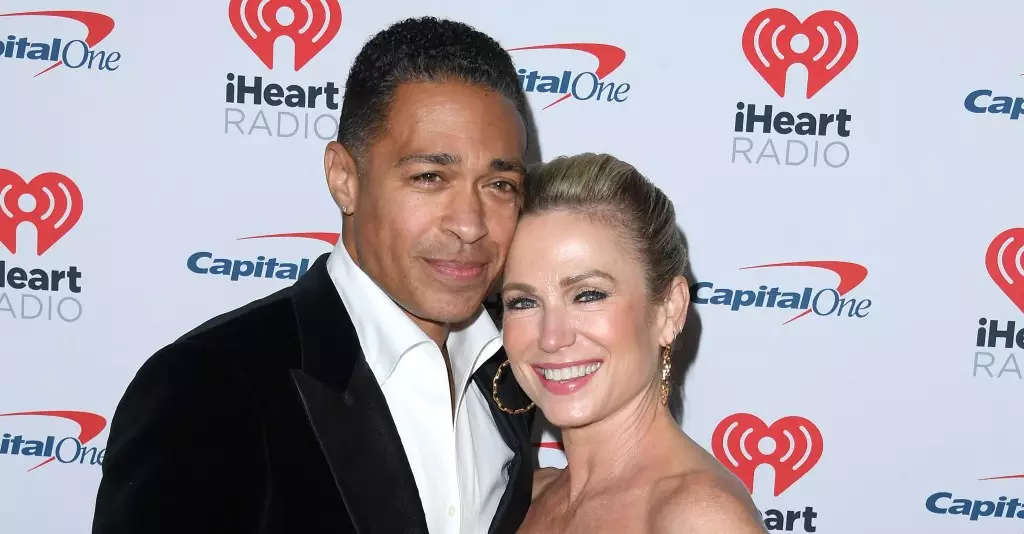In the age of heightened media scrutiny, where every decision made by news anchors is subject to public analysis, the recent incident involving ABC News anchor David Muir has sparked widespread debate. The situation arose while Muir was covering the catastrophic wildfires in Los Angeles, and a seemingly innocuous detail—a clothes pin assisting in keeping his slicker form-fitting—quickly morphed into a subject of controversy. Critics, including fellow media figures like T.J. Holmes and Amy Robach, expressed disapproval, suggesting that Muir’s focus on appearance overshadowed the gravity of the situation unfolding behind him.
The juxtaposition of Muir’s appearance with the harrowing backdrop of the wildfires illuminates the ongoing tension between form and substance in media. In a world where viewers are bombarded with images of disasters, the expectation is that reporters should convey not only facts but also empathy. Holmes and Robach queried whether Muir’s fashion choices were appropriate, suggesting that an anchor’s appearance during such a tragic event could be perceived as insensitive. This perspective speaks to a deeper cultural context, where the public holds media figures to a higher standard, especially in crisis reporting.
The outcries against Muir raise significant questions regarding the responsibilities of news anchors. The public’s perception hinges on whether they see reporters as professionals dedicated to their craft or as entertainers who prioritize visual aesthetics. Muir’s attempted style choice, albeit practical in its intent, drew ire because it suggested that he was more concerned about his presentation than the disastrous effects of the fires on communities and individuals. Such criticism is indicative of a broader conversation about how media professionals balance personal expression with their professional duties.
The Role of Media Personalities in Crisis Coverage
Amidst the backlash, Holmes and Robach provided a brief reprieve for Muir, suggesting that the tight demands of news reporting can lead to impractical solutions. The chaotic nature of on-location reporting means anchors frequently operate under immense pressure. Producers and wardrobe staff might be working in concert to streamline the appearance of the reporter while they simultaneously engage with the latest developments in the field. This insight raises the question of accountability—not only of the reporter but also of the broader media production team.
In such scenarios, it can be easy to scapegoat individual anchors for perceived missteps in presentation. This tendency diminishes the recognition that multiple factors contribute to how news is presented. The inherent chaos of breaking news, combined with the demands of live television, complicates the simplistic narratives that the public often crafts around individual figures, leading to misjudgments of priorities.
Another layer to this situation is the role of social media in shaping public perception. The internet’s immediacy allows for rapid dissemination of critiques, making it increasingly difficult for anchors to navigate their professional image in real-time. The incident surrounding Muir gained traction not only through traditional media discourse but also through platforms that amplify dissenting voices, such as Twitter. This could lead to a disproportionate portrayal of a reporter’s choices, as a few negative tweets can spiral into a widespread narrative.
In the context of Muir, the swift backlash showcases how easily an image—like a clothes pin—can transform into a symbol of criticism. This phenomenon highlights a paradox within modern journalism: as media personalities strive for authenticity and relatability, they risk being judged by minute details that may detract from the actual report.
Ultimately, the case of David Muir and his coverage of the L.A. wildfires is a microcosm of the larger issues facing journalism today. In an era where appearances can trigger swift public reactions, it’s imperative that media figures navigate the fine line between professionalism and personal expression. The conversation initiated by Holmes and Robach serves as a reminder that while reporters are expected to maintain a rapport with their audiences, they should also endeavor to remain grounded in the realities they cover. The future of journalism will undoubtedly hinge on the ability of media professionals to adapt and respond to a changing landscape of public expectation, responsibility, and the ever-present scrutiny that comes with the role.
